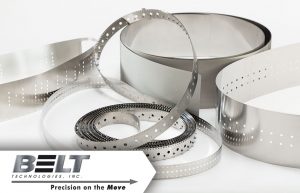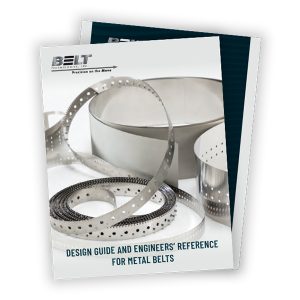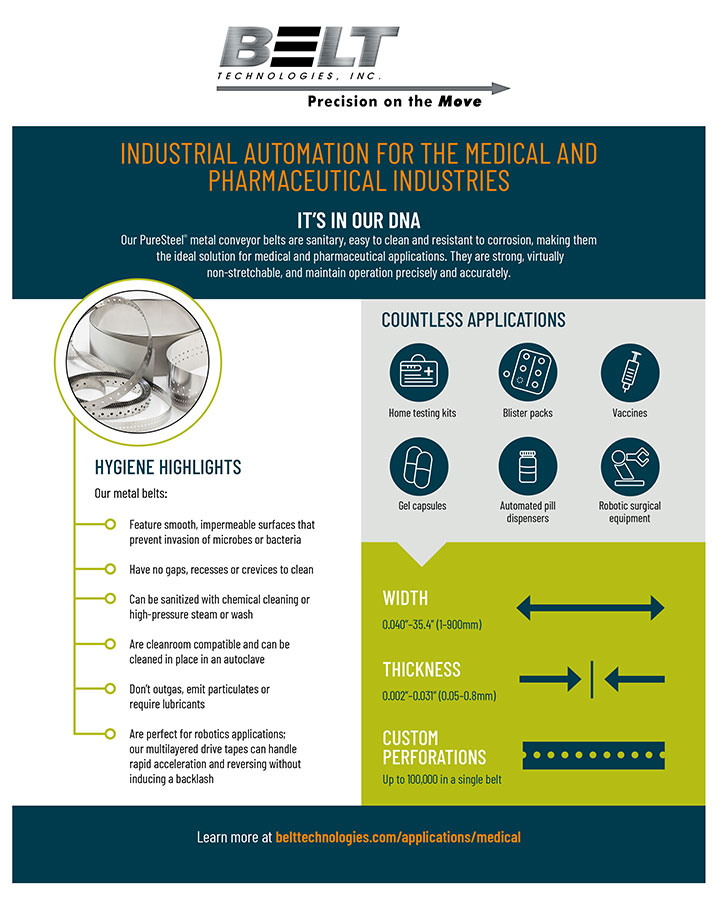 With sophisticated technology and innovative manufacturing processes, we have produced metal conveyors, timing belts and pulleys for more than 50 years. Our superior PureSteel® products are used in a wide variety of industries and are trusted to consistently outperform the competition. With that in mind, here are the top five reasons why metal belts are better than traditional belt alternatives.
With sophisticated technology and innovative manufacturing processes, we have produced metal conveyors, timing belts and pulleys for more than 50 years. Our superior PureSteel® products are used in a wide variety of industries and are trusted to consistently outperform the competition. With that in mind, here are the top five reasons why metal belts are better than traditional belt alternatives.
1) Accuracy and Repeatability
Our steel belt technology offers unique designs which will guarantee zero slip and absolute precision, which is especially notable in our drive tapes and timing belts. Stainless steel drive tapes substantially reduce chordal vibration, motion loss and backlash that can often result in inaccurate positioning of robotic motion profiles.
When it comes to metal timing belts, our models can be fabricated with a pitch accuracy of ±0.0005 inches, which is understandably valuable in designing, indexing, positioning or processing equipment.
2) Cleanliness
Unlike other belting materials, metal belts don’t generate dust or particulates that could spoil or corrupt food or pharmaceutical products. Stainless steel’s nonporous surface resists contamination, a benefit for applications where food bacteria or other germs could gather in grooves, marks or scratches. Additionally, our PureSteel® belts do not require lubricants that would introduce foreign substances into a clean environment.
3) Durability
Whether it’s extreme temperatures or unforgiving environments, our metal belts can be engineered to handle virtually anything you can throw at them. Stainless steel has a low thermal coefficient of expansion, enabling it to better resist temperature extremes, and is also corrosion resistant and vacuum compatible. Inferior materials such as plastic, rubber or cloth will warp, burn or fall apart at significantly lower temperatures, and shrink or become brittle in extreme cold. Our Sales Engineers can help you select the correct alloy and belt thickness to suit the specific requirements of your operation.
4) Strength
Stainless steel has a tensile strength ranging from of 180 to 300 KPSI (thousand pound-force per square inch), depending on the alloy and temper of the metal. That means relatively thin and lightweight belts can be designed to handle the stresses of almost any application. The high strength and low weight let more of the conveyor’s input horsepower be devoted to moving the product and not the belt, which boosts efficiency and reduces operating expenses. Simply put, metal belts are stronger and more efficient than the alternatives.
5) Customization
If you have a problem, we have a customized solution fabricated to meet your exact specifications. We’ve perfected the engineering of our PureSteel® belts, so you can trust us to design a unique belt to meet your exact needs. This includes a broad array of metal alloys, belt width and thickness combinations, perforation, patterns, coatings and attachments.
Do you think your operation could benefit from a stainless steel conveyor system? Contact us today, so we can start planning and providing the custom solutions you need.



